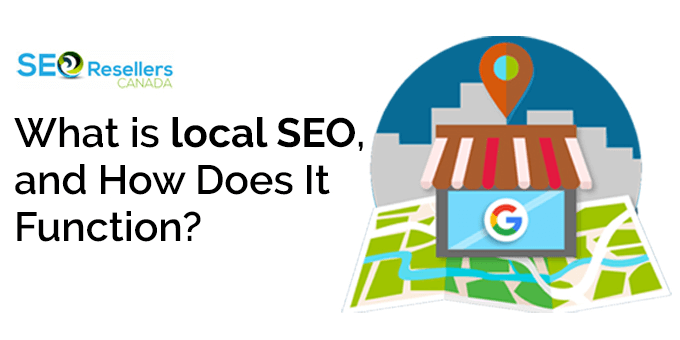If you do business online, it is essential to understand the cost of Google Ads. This information is very important regardless of your business size- small or large. Understanding how much Google Ads costs can help in making smart decisions aligned with your marketing goals. For Google Ads for small business, getting these fundamentals right is crucial.
After finishing this guide, you can understand more about what influences Google Ads expenses, the process of setting a budget, and whether Google Ads benefit your business or not. Additionally, you will gain knowledge on reducing costs and also see some actual examples where businesses were prosperous by using Google ads.
Prepared to jump in? Take a look at the field of paid advertising and how to maximize your financial plan.
1- Understanding Google Ads
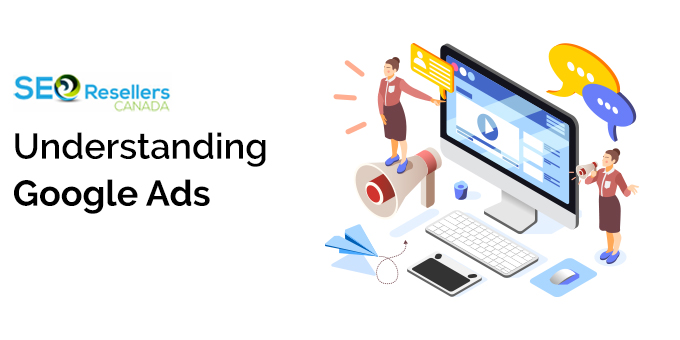
Let’s talk about Google Ads. It is a very good platform for paid online advertising. This is where businesses place their advertisements on Google Search engine results pages and also all over Google’s huge network of associated websites. It operates based on a model called pay-per-click (PPC), so you are charged only when somebody clicks your ads.
While creating a campaign for your business, you add specific keywords that are related to your business. When users search for those specific keywords, Google basically runs an auction to determine which ads will be displayed. The bid amount and the quality of your ad will influence this auction.
An experienced SEO company can help you deal with these complexities effectively.
2- Factors Influencing Google Ads Cost
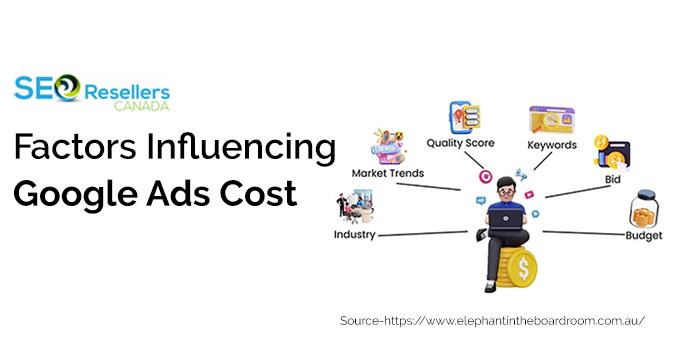
Know why Google Ads costs is important. This will help you allocate your advertising budget better.
2.1- Industry Competition
Google Ads cost is affected by the competition in your industry. The higher costs are usually seen in high competition industries such as legal services or insurance. Usually, they have higher costs per click (CPC). Legal sector businesses, for example, spend an average of $8.94 per click.
2.2- Market Trends
CPC rates are also impacted by market trends. When people want something in bulk, costs increase. Therefore, more businesses will be competing for that ad space with that keyword. It makes this keyword competition higher. This results in higher CPCs.
2.3- Quality Score
Your ad’s Quality Score influences Google Ads pricing. It ranges from 1 to 10. The score indicates how relevant and of good quality your ad and landing page are. The higher the Quality Score, the lesser your CPC will be. It means your ad is more related to users’ search terms.
2.4- Bidding Strategies
When setting up your campaign, decide on a bidding strategy. The amount of money you pay for each ad click is your bid. Higher bids generally give you a better chance of winning ad placements. However, they can blow your Google Ads budget quickly unless managed sensibly.
2.5- Ad Types
Google offers different types of ads to suit various business needs. You can choose from
- Search ads
- display ads
- shopping ads
- video ads
- app ads
Each type comes with its own pricing structure and reaches different audiences in unique ways. Cost per click (CPC) Google Ads ranges are different for each type. The ranges depend on placement and audience reach.
3- Google Ads Pricing Overview
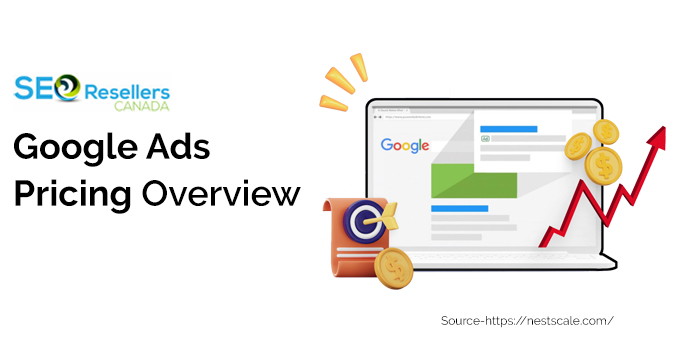
Let’s talk real numbers. In the United States, businesses typically pay between $1.99 and $4.01 per click. Canadian businesses often get a better deal, paying around $1.66 per click on average. Here’s what different industries typically pay:
| Industry |
Average CPC (US) |
Average CPC (Canada) |
| Attorneys & Legal Services |
$8.94 |
$2.92 |
| Home Improvement |
$6.96 |
$1.43 |
| Dentists |
$6.82 |
$0.63 |
| Business Services |
$5.37 |
$3.12 |
| Travel |
$1.92 |
$0.89 |
Every month, expenses can be different according to a company’s budget and aim. Some companies spend between $100 to more than $10,000 each month. These numbers show how business changes can affect your total cost of advertisement.
4- Setting Your Google Ads Budget
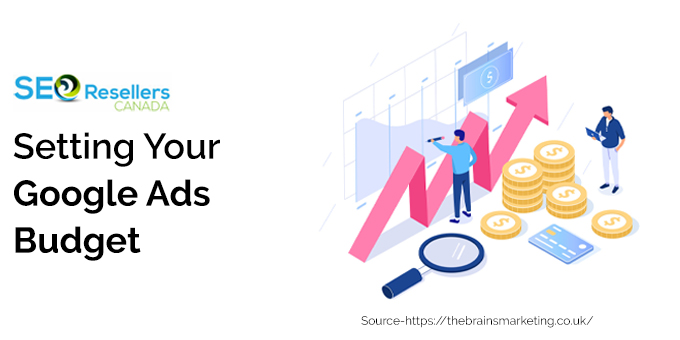
To effectively create a Google Ads campaign, it is necessary to create a budget. It is a way to have spending visibility while controlling spending.
4.1- Determine Your Goals
Begin by determining the aims of your campaign. Are you interested in
- increasing website visits,
- generating leads,
- increasing sales?
Your spending strategy will depend on what you want to get out of it.
4.2- Set a Daily Budget
Choose your each-day spending limit. What amount do you feel okay to spend every day on advertisements? This budget helps stop overspending. It also allows flexibility based on performance.
4.3- Monitor Performance
Track how your ads perform and adjust your budget accordingly. Sometimes, spending a bit more on successful campaigns can lead to better returns.
5- Is Google Ads Worth it?
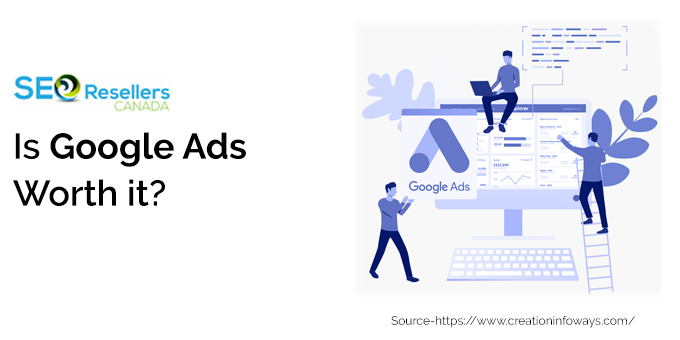
Many business owners ask: “Is Google Ads worth it?” How well you’ll manage your campaigns is really the answer. It also relies on how closely your campaigns fit with your business goals.
A well-executed campaign can help you generate impressive ROI. Businesses reportedly spend an average of $1 per dollar spent on Google Ads to make $2. This is a good reason to think about Google Ads.
But obviously, the results are achieved only at an expert’s level. You are to figure out how to manage campaigns effectively. Or, you could team up with an SEO agency or digital marketing agency. They’re experts at paid ads and can help you succeed.
6- Optimizing Your Google Ads Spend
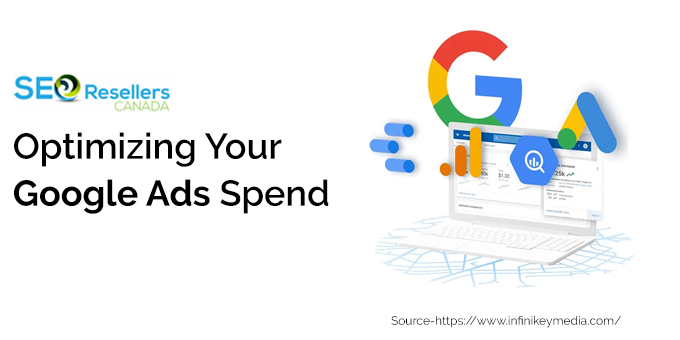
To optimize Google Ads spend, smart planning and regular fine-tuning are needed.
First, take a closer look at which keywords attract the best customers. There are some words that might get plenty of clicks but few sales; other words consistently result in purchases. It’s like having a bunch of data about which products in your store are selling the best and then putting them on prime shelf space. By speaking directly to what customers want, you can differentiate your ads from everyone else’s.
Learn from different versions of your ads to see what connects most with your audience. If it works, you should try to understand why. Was it the wording? The offer? The timing? You can use these insights to learn how to refine your other ads.
Don’t leave out the negative keywords – they are your bouncers, keeping out the uninterested clicks from your products. Negative keywords keep unwanted traffic out.
7- Strategies to Lower Your Google Ads Costs
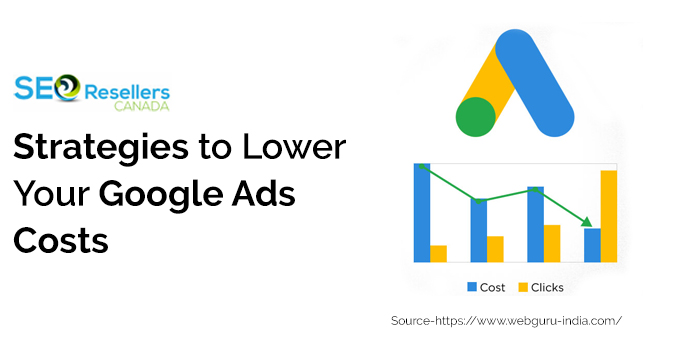
Advertising on Google Ads aims to decrease expenses in order to make the most of your budget usage. Here, let us discuss some methods you can use to lower costs yet still execute effective campaigns.
7.1- Improve Your Quality Score
A good method for reducing the cost and expenditure on your Google Ads is by improving your Quality Score. This score informs you of how much your ads are reliable to users. It considers aspects like ad relevance, click-through rate, and landing page experience. If you possess a superior quality score, it will convert to reduced costs for each click (CPC). To enhance this score, make sure your advertisements pertain to the keywords you are aiming at.
7.2- Use Long-Tail Keywords
A long tail keyword phrase is a phrase that is more specific and usually longer than a more common keyword. Naturally, you would not want to target just “shoes,” but instead, “best-running shoes for flat feet.” These keywords usually have less competition, and that means generally lower CPCs. In addition, they get people who are closer to buying decisions, which makes them cheaper.
7.3- Optimize Your Ad Copy and Creatives
The role of your ad copy is to attract clicks. It has to be clear and compelling. To put it differently, you must utilize compelling calls to action that can engage the user to hit on your advertisement. You could try performing A/B testing with multiple versions of your ad and decide which is more effective. After enhancing both written content and images of your ad, there might be a rise in CTR and over a period, less CPC may follow.
7.4- Leverage Ad Scheduling
With ad scheduling, you can pick when your ads will appear. Find out during what time people are most active and ready to engage with your ad. To improve performance, you might run ads during peak times and not during off-peak hours, ensuring that your spending is not wasted. This method is capable of increasing both CTR and Quality Score.
7.5- Implement Geographic Targeting
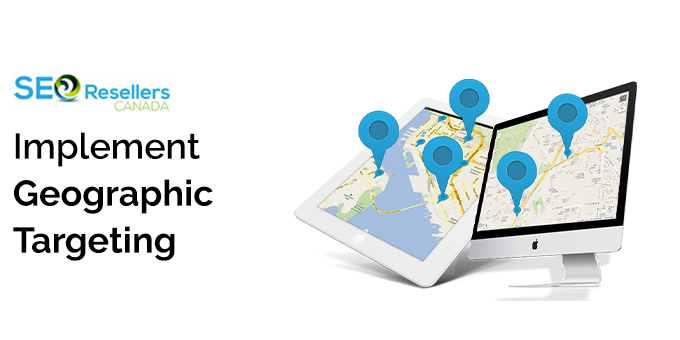
With geographic targeting, you may only show ads in specific places. Thus, your budget can be focused on those areas that yield better results. For example, if you are a local small business, you can target nearby cities and neighborhoods within that city where customers reside. With this, you are ensuring that the CPC isn’t so high because your ads are targeting the right audience.
7.6- Monitor Competitor Activity
Watch how competitors do the same thing. This way, you can reveal possibilities to reduce your costs. They examine their keywords, ad copy, and offers to evaluate their opportunities or threats in the market. This will allow you to adapt your own campaigns based on what works for them.
7.7- Exclude Underperforming Keywords
You must check the performance of your keywords regularly. Remove or pause those keywords that are consistently performing badly and have a high cost with low conversions. Thus, you will be able to redirect your budget towards the more effective keywords that bring in better results.
7.8- Optimize Landing Pages
Users click on your ad, and they land on your landing page. Make sure that it is, by and large, relevant to the ad content and delivers a great user experience. Landing page optimization can increase the conversion rate and decrease the bounce rate; this will get a better quality score and lower CPC.
If you implement these strategies, you can keep your Google Ads budgets under control while preserving high performance in your ads. You can also use SEO outsourcing to help manage these strategies effectively. Digital marketing is all about continuous monitoring and optimization, which is crucial to long-term success.
8- To conclude
Knowing the cost of Google Ads can help you to make wiser decisions when it comes to advertising online. Although prices change depending on industry and location, successful outcomes come from careful preparation and constant refinement. To level up your online presence, remember that the objective isn’t solely lesser expenditure – but getting improved results for each dollar you put in.
If you have a Google Ads or want to better the current campaigns, put emphasis on making ads that have good quality and relevance, which will assist your potential clients. Keep doing trials and fine-tuning your methods, not hesitating to ask for professional advice in paid ads when it is necessary. To gain more knowledge about strategies in digital marketing and popular trends, look at materials from trustworthy sources such as Moz or Search Engine Watch.
The world of online advertisements is ever-changing, so being current helps you stay ahead of the competition. With a good plan and cautious supervision, Google Ads can be an incredibly strong resource for expanding your business during this time dominated by technology.
To gain additional knowledge about maximizing your digital marketing efforts, I suggest exploring resources from leading entities in the industry or consulting seasoned professionals for advertising guidance. Effective content marketing combined with Google Ads can help you achieve success, as it’s not only related to the amount disbursed but also how intelligently you invest to connect and engage with your desired audience.















